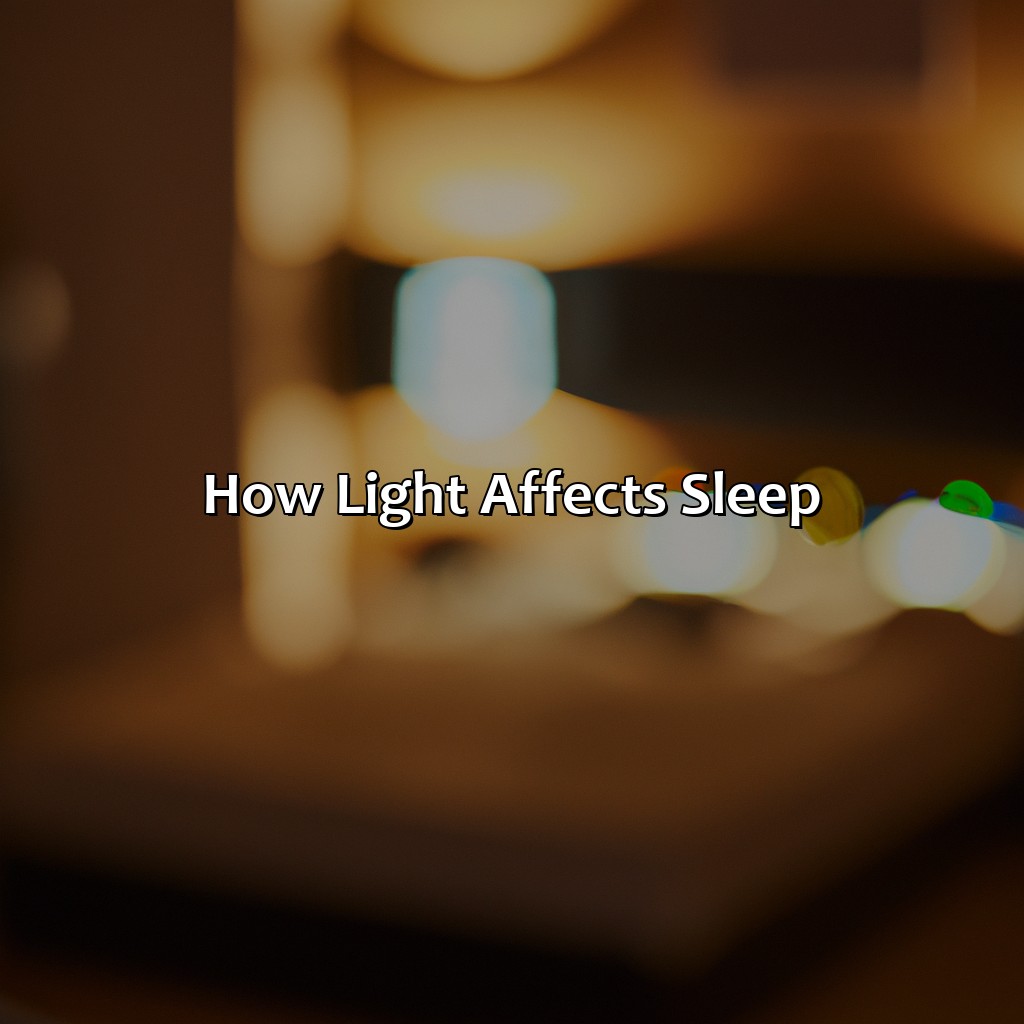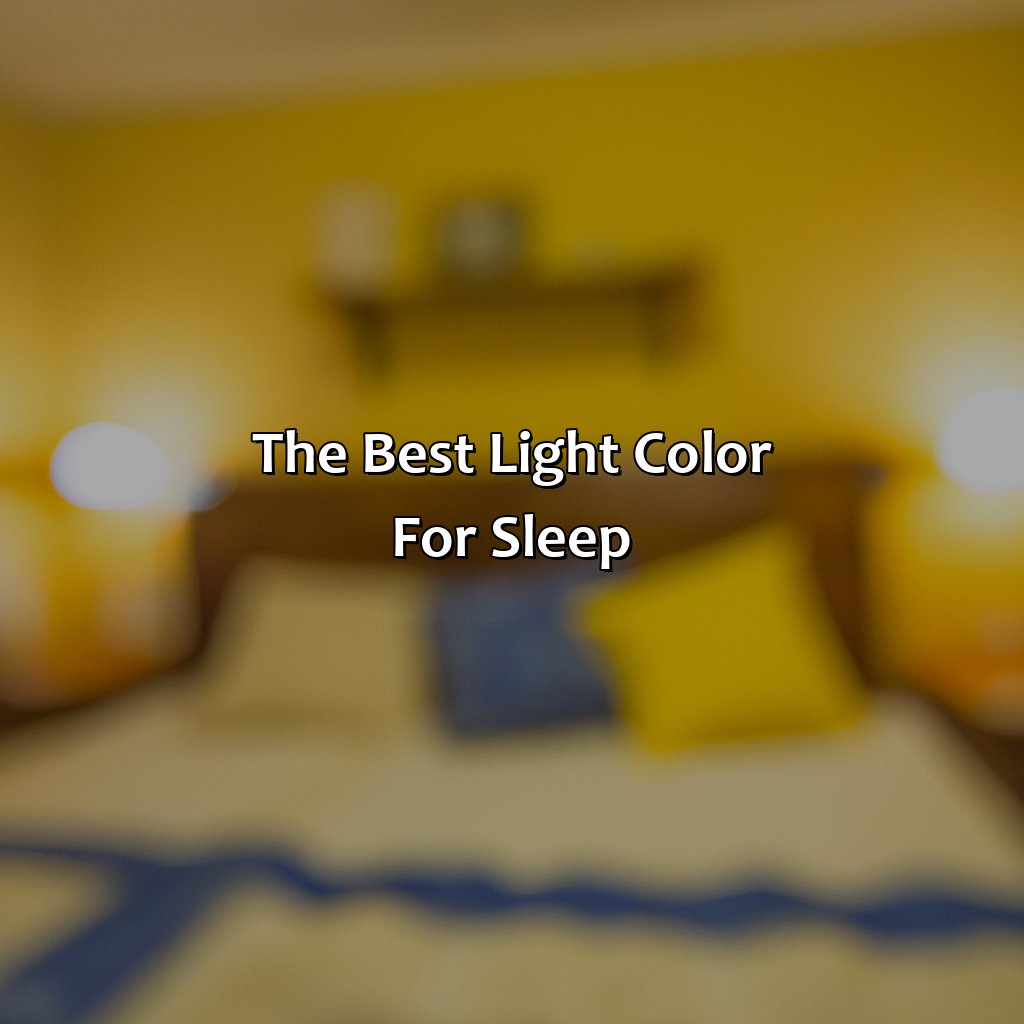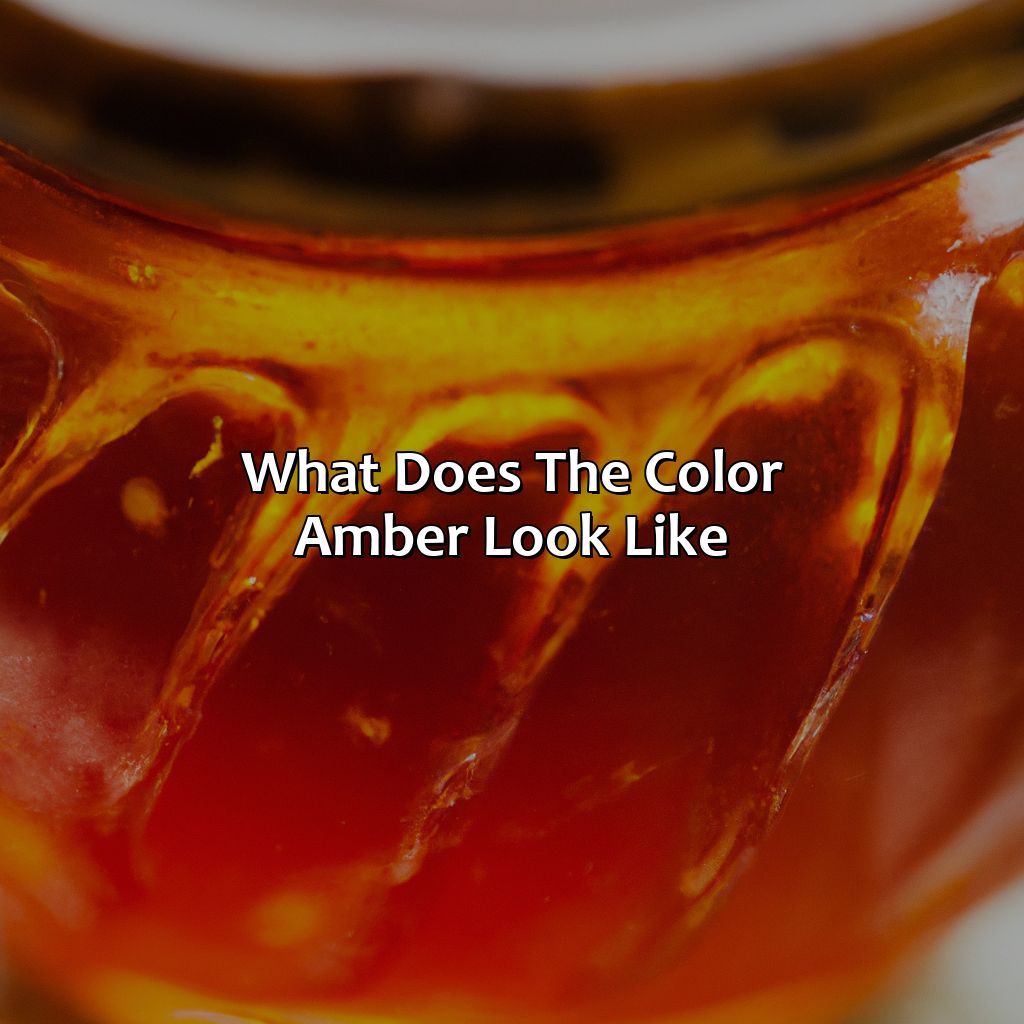Key Takeaway:
- The best color light for sleep is red, as it has the least impact on the body’s production of melatonin, a hormone crucial for sleep. Red light can help improve the quality of sleep, reduce the time it takes to fall asleep, and decrease the likelihood of waking up during the night.
- Avoiding blue light before bed is also crucial, as it suppresses the production of melatonin and disrupts the circadian rhythm. This can result in difficulty falling asleep, poor sleep quality, and even insomnia. It is recommended to avoid using electronic devices or watching TV for at least an hour before bedtime.
- Other tips for using light to improve sleep include using low-level lighting in the bedroom, using bedside lamps with dimmers to create a relaxing atmosphere, and reducing overall light exposure before bedtime to promote relaxation.
The Importance of Light in Sleep

Photo Credits: colorscombo.com by James Nelson
As light plays a crucial role in regulating our circadian rhythm, its impact on our sleep cannot be overstated. While bright light can inhibit the release of melatonin, the hormone that induces sleep, low light levels can help us fall asleep faster. Therefore, choosing the right color and intensity of light in our bedroom is essential for a good night’s sleep. In the following paragraphs, we will explore the various aspects of the importance of light in sleep and how the color of the light can impact our sleep quality.
Research suggests that blue light, which is present in electronic screens, suppresses melatonin production and disrupts circadian rhythm, leading to sleep disturbances. On the other hand, warm-colored light, such as orange or red, can stimulate the production of melatonin and promote relaxation, helping the body prepare for sleep. This explains why many experts recommend using dim, warm light, especially during the hours leading up to bedtime.
Apart from the color of light, the intensity and duration of light exposure also play a crucial role in regulating our sleep patterns. Exposure to bright light during the day can boost alertness and keep us awake, whereas exposure to low-level light before bedtime can help us relax and fall asleep faster. Additionally, it is important to avoid exposure to bright light during the night, as it can disrupt our body’s natural sleep cycle and lead to poor sleep quality.
Finally, the history of the importance of light in sleep dates back to prehistoric times when our ancestors were guided by the natural light of the sun and moon. With the advent of electricity and modern technology, artificial light has become a ubiquitous part of our daily lives, often affecting our sleep patterns negatively. Therefore, it is important to be mindful of our light exposure and adopt healthy light habits to improve our sleep quality.
How Light Affects Sleep

Photo Credits: colorscombo.com by Jordan Hernandez
To get to grips with how light impacts your sleep, take a look at the section ‘How Light Affects Sleep’.
Check out the sub-sections:
- ‘What Color Light Is Best For Sleep’
- ‘The Role of Melatonin in Sleep’
- ‘Circadian Rhythm and Light Exposure’
Learn how melatonin and your circadian rhythm are affected by light. This, in turn, affects your sleep quality.
The Role of Melatonin in Sleep
Melatonin, a hormone produced in the pineal gland of the brain, plays a vital role in regulating sleep-wake cycles. It is involved in the synchronization of circadian rhythms, which are responsible for maintaining our internal biological clock. The production of melatonin is influenced by light exposure, and it increases when it’s dark outside. This means that melatonin levels rise at night and fall during daylight hours, which makes it an essential chemical for quality sleep.
Understanding how light affects the release of melatonin is crucial for better sleep hygiene. Exposure to bright artificial light can interrupt our natural circadian rhythm and decrease our ability to fall asleep or stay asleep. On the other hand, avoiding blue light before bed can encourage melatonin production and promote restful sleep.
It’s important to note that not all colors of light have the same impact on melatonin levels. Research suggests that blue light suppresses melatonin release more than any other color, while red may have less impact on its production. Using amber or green lights can be beneficial for creating a relaxing environment before bedtime.
To optimize your sleep environment, you can take measures such as avoiding bright screens before bed or using low-level lighting throughout your home. Installing dimmer switches on bedside lamps or reducing overall light exposure in your bedroom can also help improve your quality of sleep by promoting healthy-levels of melatonin production.
Interestingly, research shows that even small amounts of artificial light exposure at night can disrupt our natural circadian rhythm and affect our ability to get enough quality sleep. Melatonin secretion has been linked to various health conditions like high blood pressure, depression and obesity making proper rest essential for overall wellbeing.
So understanding how different colors of light impact both our natural body rhythms and release of chemicals like melatonin not only promotes a healthy cycle but supports long-term effects on physical health too!
Light exposure can mess with your circadian rhythm and melatonin signaling, but don’t worry, we’ve got the solutions.
Circadian Rhythm and Light Exposure
The body’s natural circadian rhythm is regulated by light exposure. Light signals the production of melatonin, which aids in sleep. Blue light exposure during evening hours disrupts this cycle and reduces melatonin production, leading to poor sleep quality. On the other hand, amber and red lights promote melatonin production and are ideal for inducing sleep. Limiting overall light exposure before bedtime also helps maintain proper circadian rhythm, promoting healthy sleep patterns. It is recommended to use low-level lighting and bedside lamps with dimmers for better sleep quality. Pro Tip: Reduce blue light exposure at night for improved sleep hygiene.
Choosing the right light color for better sleep is key, as certain hues can boost melatonin production and regulate our circadian rhythm.
The Best Light Color for Sleep

Photo Credits: colorscombo.com by Richard Baker
For optimal sleep, light color is key! It affects melatonin levels, which control your sleep-wake cycle. So, which light color is best? Check out these sub-sections to find out!
- Red Light for Sleep
- Blue Light for Sleep
- Green Light for Sleep
- Amber Light for Sleep
Get better sleep – choose the Best Light Color for Sleep!
Red Light for Sleep
Studies suggest red light is the optimal solution for better sleep. It does not suppress melatonin production like other lights, improves overall sleep quality and helps fall asleep faster. The effectiveness of red light is due to its low color temperature which instills a calming effect on individuals.
Red light benefits those with insomnia who find it challenging to fall asleep quickly. Thus reducing stress levels by increasing melatonin levels – a hormone responsible for regulating the body’s internal clock- aiding individuals in establishing consistent sleep patterns.
The intensity of red light should be low, just enough to suffice as an indicator of visibility.
Red Light was found significantly observed within a study focused on aircraft pilots operating remotely from earth’s time zones amongst 8 volunteers assigned 7 hours home-base time per day during which they were encouraged to rest whenever wanted either in red light or normal bright white fluorescent lamps that reduces melatonin production resulting in poor quality sleep leading to illness among them.
A friend of mine stated that she was struggling with falling asleep at night due to her job taking most of her daytime, leading her eyes too tired even while relaxing at night. As a possible solution, she switched from using high illuminated overhead lights consisting of blue and white LEDs to red light bulbs over her bedroom lamp and has been having good nights ever since. She claims she wakes up fresh and alert feeling well-rested.
When it comes to blue light and sleep, the only thing that will keep you up at night is the thought of not knowing how to avoid it.
Blue Light for Sleep
Exposure to blue light at night can affect the quality and duration of sleep. This type of light decreases melatonin production, which is a key hormone regulating sleep.
Blue Light has been widely studied for its impact on sleep. Its properties can reset the circadian rhythm by suppressing melatonin levels in the body, thereby worsening sleep quality.
Studies have shown that exposure to even small amounts of blue light can negatively impact one’s ability to fall asleep and stay asleep. It is thus recommended to avoid using devices with blue-light displays at least an hour before bed.
As per research, blue-light exposure may also increase the risk of eye disease. The American Medical Association recommends avoidance of blue light at night especially from screens such as smartphones or tablets as it can interfere with one’s internal clock and hinder their ability to rest properly.
Green light might be a great option for illuminating your sleep space, but don’t worry, you won’t have to feel like you’re camping out in a traffic light.
Green Light for Sleep
Research suggests that green light may have a positive impact on sleep quality. Studies indicate that exposure to green light can help enhance REM sleep and increase daytime energy levels. The positive effects of green light can be attributed to its ability to stimulate the melanopsin receptor, which controls circadian rhythm and sleep patterns. Unlike blue light, which can negatively impact melatonin production, green light does not interfere with the body’s natural release of this hormone and promotes better sleep overall. Using green light as a part of your sleep routine could be an effective way to improve overall restfulness.
In addition, green light has been shown to have a calming effect on the mind and body, helping reduce stress levels and promote relaxation. This makes it an excellent choice for those who suffer from anxiety or insomnia. Green light therapy is also being studied as a potential treatment for certain medical conditions such as seasonal affective disorder (SAD), chronic pain, and migraines.
Interestingly, some people report that exposure to green light improves their vision at night by enhancing contrast sensitivity and reducing glare. Further studies are needed to confirm these findings, but it is possible that green lighting may be beneficial for those who drive at night or participate in outdoor activities at dusk or dawn.
A friend of mine had been suffering from insomnia for years before discovering the benefits of green light therapy. She began using a bedside lamp equipped with a green bulb each evening before bed, gradually transitioning from brighter white lights over the course of an hour. Within two weeks, she noticed significant improvements in her quality of sleep – feeling more rested upon waking in the morning than she ever had before. Her story underscores the importance of exploring non-traditional approaches when treating sleep disorders, including experimenting with different types of lighting.
Amber light: the sleep-inducing hero that aligns with your body’s natural rhythms.
Amber Light for Sleep
Amber light is an optimal option for promoting sleep due to its unique wavelength, which mimics the natural sunset. This type of light has a calming effect on the body and mind, allowing for the production of melatonin – an essential hormone that regulates sleep.
When exposed to amber light, the circadian rhythm begins to shift towards sleep mode, minimizing exposure to stimulating blue light and enhancing relaxation. Unlike blue light which suppresses melatonin production, amber light does not interfere with the body’s natural ability to produce the hormone.
What’s interesting is that various studies have found that amber light can reduce symptoms of insomnia and improve overall sleep quality. For instance, in a study published in The Journal of Biological Rhythms, participants exposed to amber light experienced 80% less interference in their circadian rhythms than those exposed to blue or white light.
It’s crucial to note that not all amber lights are created equal as they emit varying levels of wavelengths. It’s recommended to choose bulbs with a color temperature of around 1800K and prefer lamps equipped with dimmers for maximum flexibility and customisation. Lighten up your bedtime routine with these tips for better sleep hygiene and LED lights that promote relaxation and combat insomnia, including the use of a night light to improve sleep quality.
Tips for Using Light for Better Sleep

Photo Credits: colorscombo.com by John Moore
Combat insomnia! Improve your sleep hygiene by using light as a tool for relaxation. Avoid blue light at night. Use low-level lighting. Get a bedside lamp with a dimmer. Reduce light exposure before bed. Follow these tips and use LED lights designed for sleep. Create a relaxing night-time ambiance. Promote better sleep.
Avoiding Blue Light at Night
Exposure to blue light at night can disturb the sleep-wake cycle and suppress the production of melatonin, leading to insomnia. To avoid this, experts recommend limiting blue light exposure at least 2-3 hours before bedtime. Light therapy devices with filters that block blue light can also be used as a sleep aid. Good sleep hygiene practices include avoiding electronic devices before bed and using low-level lighting in the bedroom. Incorporating these habits into your routine can improve the quality and duration of your sleep, reducing the risk of insomnia.
When it comes to bedroom lighting, keeping it low-level is the key to a good night’s sleep and a great night-time ambiance.
Using Low-Level Lighting
Using Subtle Illumination for Ideal Sleeping Environment
Subtle illumination is a crucial bedroom lighting element for maintaining ideal night-time ambiance. Proper low-level lighting helps negate the effects of glaring artificial lights that stimulate the mind, making it difficult to drift off to sleep. Here is a six-step guide:
- Use minimal wattage when selecting night lamps.
- Avoid reading or using cell phones while in bed to reduce screen brightness.
- Place dimmer switches in convenient areas for optimal control.
- Remove overhead lights and opt for directional or indirect wall sconces instead.
- Install blackout curtains that minimize external light sources from outside the window – an excellent solution for those who are sensitive to infrequent outdoor sounds and luminescence.
- Use natural colors like beige, ivory and muted pastels for walls and linens. Calming hues add warmth to the room as well as encourage relaxation and drowsiness.
For optimal results, consider placing all electronic devices outside of the bedroom. It is best to avoid watching TV or working in bed as this too affects melatonin levels. Reducing overall light exposure before bedtime can help tremendously with sleep quality.
Scientific studies show that subtle evening illumination also plays a vital role in suppressing melatonin production which morphs into turbulent rhythm leading towards insomnia. Hence, one should make sure bedsides and other dimly-lit areas do not emit bright rays.
A study by the National Sleep Foundation reinforced that using low-level lighting: enhances mood positively, increases relaxation, minimizes stress, promotes relaxation, ameliorates sleeping disorders – enhancing general health while reducing symptoms of depression and anxiety. Adjusting the brightness of your bedside lamps with dimmers can help set the mood for peaceful sleep and avoid disturbing your bedtime routine.
Using Bedside Lamps with Dimmers
Dimming bedside lamps can be beneficial for creating a calming bedtime routine. Lowering the brightness will signal to the brain that it’s time to wind down and prepare for sleep. Using light dimmers on bedside lamps allows for easy control over the amount of light in the room, making it easier to create a relaxing environment. This can promote healthy sleep and reduce the negative effects of excess light exposure on circadian rhythms.
To further enhance this effect, using warm color temperature bulbs such as amber or red can also aid in relaxation and promote melatonin production. This is important because melatonin is a hormone that regulates our sleep-wake cycle.
A pro tip would be to set up a routine where you start dimming the lights an hour before bed while doing other relaxing activities like reading or meditating. This helps your body naturally wind down and get ready for rest, leading to better quality sleep.
Dim the lights and set the mood for a good night’s sleep: reduce light exposure before bedtime to promote relaxation.
Reducing Overall Light Exposure Before Bed
Reducing the amount of light exposure before bedtime is crucial for a better sleep and relaxation. Limiting your exposure to bright lights at least an hour before you plan to go to bed is an effective way of reducing overall light exposure right before bed. This can assist the body in preparing for restful sleep.
To decrease overall light exposure before bed, ensure that electronic devices that emit blue light are turned off or on night mode, use low-level lighting during the late hours of the day, and consider using lamps with dimmers placed beside your bed. By exposing yourself to less light, your brain produces more melatonin hormone essential for regulating healthy sleep patterns, hence promoting a deeper and uninterrupted night’s rest.
For additional ways of reducing overall light exposure before bed without interrupting your daily routine activities, install amber filters over electronic devices screens used after 6 PM, if possible. Making the room darker could also be an option by, for example, installing blinds or curtains with room-darkening properties.
Five Facts About What Color Light is Best for Sleep:
- ✅ Blue light can disrupt the production of melatonin, a hormone that regulates sleep. (Source: Harvard Health)
- ✅ Red and orange lights have been shown to be the most conducive to sleep, as they have longer wavelengths that don’t interfere with melatonin production. (Source: Sleep.org)
- ✅ Bright white and blue lights can help regulate circadian rhythms and boost alertness during the day. (Source: National Sleep Foundation)
- ✅ Exposure to natural sunlight during the day can help regulate sleep-wake cycles and improve nighttime sleep quality. (Source: Mayo Clinic)
- ✅ Devices like smartphones and laptops emit blue light that can interfere with sleep, so it’s best to avoid using them for at least an hour before bedtime. (Source: Sleep Foundation)
FAQs about What Color Light Is Best For Sleep
What color light is best for sleep?
The best color light for sleep is the warm color light which ranges from yellow to red. The blue light, on the other hand, should be avoided as it can disrupt the production of melatonin and interfere with your sleep-wake cycle.
How does light affect our sleep?
Light affects our sleep by regulating the production of melatonin, a hormone that controls our sleep-wake cycle. Exposure to bright light, especially blue light in the evening, can suppress melatonin production, making it harder for us to fall asleep and stay asleep.
Can I use a night light to aid my sleep?
Yes, you can use a night light to aid your sleep, but make sure it emits a warm color light like yellow or red. Avoid night lights that emit blue light as they can disrupt your melatonin production and interfere with your sleep.
What devices emit blue light that can affect my sleep?
Devices that emit blue light and can affect your sleep include smartphones, tablets, laptops, and televisions. Exposure to these devices, especially in the evening, can suppress your melatonin production and make it harder for you to fall asleep.
Are there light bulbs specifically made for sleep?
Yes, there are light bulbs specifically made for sleep that emit warm color light like yellow and red. These light bulbs are designed to promote a healthy sleep-wake cycle by supporting melatonin production while you sleep.
Can I use a dimmer switch to regulate my light and aid my sleep?
Yes, you can use a dimmer switch to regulate your light and aid your sleep. However, make sure the dimmer switch is compatible with warm color light bulbs to avoid disrupting your melatonin production.





